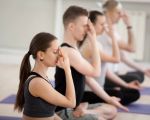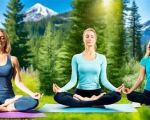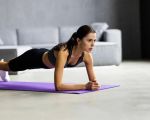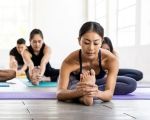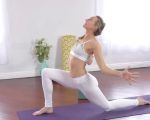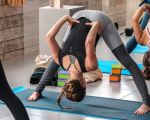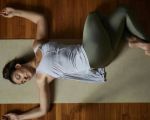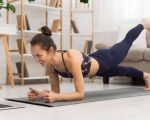- understanding-flexibility-and-yoga
- why-yoga-boosts-flexibility-effectively
- key-poses-to-build-flexibility
- progressive-routine-for-stretch-and-strength
- common-challenges-and-personal-insights
- real-case-flexibility-transformation-story
- tips-to-maintain-and-enhance-flexibility
- free-yoga-links-resources
1. Understanding Flexibility and Yoga
To build flexibility with yoga, it helps to know what flexibility means. Flexibility isn’t just the ability to touch your toes—it’s the capacity of your muscles and joints to move through full ranges. Yoga improves flexibility by combining stretch with breath control, warming tissues, and training your nervous system to relax tight muscles. Consistent practice turns stiffness into fluid movement over time.
Unlike quick static stretching, yoga blends dynamic stretching, isometric holds, balance, and awareness. This integration means you’re strengthening and lengthening—so your flexibility is functional, supported by muscle control, not just loose but weak.
2. Why Yoga Boosts Flexibility Effectively
Yoga stands out because of its multi-dimensional flexibility benefits:
- Gradual tension release: poses like Cat-Cow warm up the spine before deeper backbends.
- Strength-support: holding Warrior II builds muscle, protecting joints even as you stretch.
- Breath connection: deep exhales signal muscles to release further during stretches.
- Nervous system training: yin or gentle yoga teaches your body that deeper stretch is safe.
Because yoga uses full-body movement patterns, you don’t just stretch one area—you build mobility across joints and muscles in balance with strength.
3. Key Poses to Build Flexibility
A focused yoga routine to build flexibility with yoga should include these foundational poses:
- Downward Facing Dog: stretches hamstrings, calves, and shoulders—great for full-body lengthening.
- Low Lunge (Anjaneyasana): opens hips and quads; essential for deep lower body mobility.
- Pigeon Pose: targets deep glutes and hip rotators—often where stiffness hides.
- Seated Forward Fold (Paschimottanasana): passive hamstring stretch with breath-centered release.
- Bridge Pose: lifts chest and opens the front body, improving spine flexibility.
Hold each pose for at least one minute, breathing evenly. Use props—blocks or straps—to support your alignment without strain.
4. Progressive Routine for Stretch and Strength
Integrate a weekly routine to build flexibility with yoga through progressive intensity:
- Warm-up (5–10 minutes): gentle flow sequence and shoulder rolls.
- Dynamic stretching (10 minutes): lunges, cat/cow, and hip circles to prep muscles.
- Peak poses (15–20 minutes): include Held Low Lunge, Pigeon, Forward Fold with long holds.
- Strength-focused stretching (10 minutes): poses like Bridge or Warrior III build muscular support.
- Cool-down (5 minutes): restorative legs-up-the-wall to ease tension.
Practice this 2–3 times per week, increasing hold times and pose complexity as you progress. Journaling your sensations helps track incremental gains.
5. Common Challenges and Personal Insights
Every flexibility journey has roadblocks:
- Plateaus: Your muscles adapt, and improvements slow. Counter this by rotating pose variations.
- Overstretching: It’s easy to push too hard and risk strains. Listen to your edge and back off when tension turns sharp.
- Life stress: stress tightens muscles subconsciously. Integrate breathing techniques into your practice—like Ujjayi breath—to calm the mind and body.
My own transition from stiff hips to easy pigeon pose took months. The breakthrough came with yoga nidra—deep rest before practice—and consistent 15-minute morning routines that slowly chipped away stiffness.
6. Real Case: Flexibility Transformation Story
Consider Vikram, a 45-year-old software engineer. He started yoga to relieve back pain, seldom believing he could touch his toes. After six months working on a regular yoga routine with a mix of Vinyasa and restorative poses, he completed a seated forward fold with palms flat on the mat—a milestone he never thought possible.
He shared: “What surprised me was how flexibility helped my posture at work, eased tension headaches, and improved my golf swing after just two seasons.” His story shows that yoga doesn’t just build flexibility—it transforms daily life, from desk posture to weekend sports.
7. Tips to Maintain and Enhance Flexibility
To continue progress after the initial stretch gains, consider these practices:
- Daily mini-stretch breaks: 5-minute morning routines guard against stiffness.
- Cross-training: add foam rolling and light resistance training to support muscle balance.
- Variety: alternate Targeted yoga styles—like Yin for deep holds or Power Yoga for movement-based build.
- Hold breaths: pause for three deep exhales in each stretch to signal deeper release.
Tracking flexibility improvements—like inches from palm to foot in a fold—provides motivation and clarity on progress.
8. Free Yoga Links Resources
If you want free and trustworthy guides to help build flexibility with yoga, check out Free Yoga Links for curated pose sequences, printable guides, and video libraries. Their beginner-friendly routines make it easy to start safely at home, while intermediate and restorative practices help deeper work.
They also offer tips on choosing the right props—blocks, straps, bolsters—to support your practice and flexibility journey. With a mix of practice and insight, Free Yoga Links can be a steady partner in your yoga and mobility goals.

